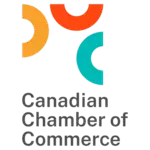Types of Free and Open Source Tools for Binary Diffing
Would you like to learn more?
Download our Pentest Sourcing Guide to learn everything you need to know to successfully plan, scope, and execute your penetration testing projects.
As the name suggests, Binary Diffing (also known as “bindiffing”, "diffing", or patch analysis) is a software reverse engineering process for comparing the difference between two binary files. This is typically two recent versions of the same program or file. While binary diffing most often focuses on executable files, any binary files fall under this category: compiled libraries, firmware images, drivers, or data files—essentially, any binary-encoded data where version-to-version comparisons might reveal meaningful changes.
For scripting languages, simple command line tools such as diff or git can compare the contents of two files to identify changes. But when it comes to binary files, things get more complicated since line breaks cannot be used to sort data into lines of code (LOC).
Some things that Binary Diffing seeks to identify includes:
String changes: Modifications of embedded string literals (plaintext) can expose new functionality, command-line parameters, URLs, error messages, or suspicious payloads.
Differences in functions: New, removed, or modified functions, can point to places where changes have been implemented such as where patches have been added to a program.
Data structures: Changes in structural layouts, such as changed data types, or shifts in memory assignment will affect how data is interpreted at runtime. Modifications to the structure of a binary file’s section headers (such as the. .text, .data, .bss ?) may also reveal added functionality, packed code, or obfuscation layers.
Flow graphs: Alterations in a functions control flow graph (CFG) represent changes in the logic or execution path of the program indicating modified functionality.
Symbols: Modifications to symbol tables, including renamed functions, variables, or debug information is useful for analyzing stripped binaries where symbol recovery tools are used.
Instruction-level differences: Changes in individual assembly instructions, which may reveal bug fixes, optimizations, or inserted backdoors at the lowest level of program logic.
Import/export table differences: Updates in imported or exported functions (from DLLs or shared libraries) can indicate changes in dependencies or new capabilities added to interact with the operating system or third-party services.
Why Do Security Researchers Conduct Binary Diffing?
Security researchers perform binary diffing to uncover meaningful changes between versions of a program, usually when source code is unavailable. It serves multiple purposes in cybersecurity including:
Patch inspection and vulnerability discovery: By comparing a patched binary to its previous unpatched version, researchers can isolate exactly what was changed and deduce the root cause of a vulnerability.
Malware evolution analysis: Comparing different variants of malware samples helps analysts identify what has changed—such as added capabilities, obfuscation techniques, or new command-and-control infrastructure. Changes in how a binary is compiled (e.g., optimization settings, compiler version) is useful for threat attribution.
Analyzing trojanized binaries: Binary diffing is a powerful method for identifying unauthorized or malicious code injected into otherwise legitimate software. This is essential for understanding what a trojanized binary is doing—such as exfiltrating data, creating persistence, or establishing remote access—and how it differs from the clean, official version.
Compliance and binary verification: Diffing can support security audits by ensuring that deployed binaries match verified builds in high-security environments.
7 Free and Open Source Tools for Binary Diffing
Let's review some key open‑source tools and plugins for Binary Diffing. These tools offer both command‑line and GUI‑based workflows for matching, graph comparison, and heuristic diffing across stripped or optimized binaries
Google BinDiff
Google BinDiff, originally developed by Zynamics, was released in the mid-2000s. After Google's acquisition of Zynamics in 2011, BinDiff became a free, closed-source plugin for IDA Pro. BinDiff offers robust graph-based visualizations that compare control flow graphs (CFGs) and call graphs between binaries, to compare structural and functional similarities. It also supports symbol analysis, similarity metrics, fuzzy matching, and detailed statistics on matched, unmatched, and changed functions. A quick search of the Internet reveals that Google BinDiff is one of the most popular Binary Diffing tools in 2025.
QBinDiff
On the other end of the spectrum, QBinDiff is an experimental, modular binary‑diffing toolkit released by Quarkslab in October 2023. It frames diffing as an NP‑hard network alignment task, combining up to 33 user‑definable features (CFG structure, instruction mnemonics, data references, etc.) and graph topology to compute matches. Although less flexible, QBinDiff emphasizes full programmability, letting users tune similarity metrics, weights, anchor constraints, and diff at function or block level—ideal for embedded firmware or niche use‑cases.
BinKit 2.0
BinKit 2.0 is a binary‑code similarity analysis (BCSA) benchmark tool released by KAIST’s SoftSec group in March 2023. It builds on the original BinKit from their 2020/21 paper, expanding to ~371,928 binaries spanning eight CPU architectures, six compiler optimization levels (including Ofast), and numerous compiler versions. BinKit is a reproducible dataset and toolchain framework, which is ideal for evaluating and comparing binary diffing techniques across compilers and compile options.
Binary Diffing Tools For Ghidra
Ghidra is a free, open-source reverse engineering suite developed by the U.S. NSA (National Security Agency) and publicly released in 2019. It supports disassembly, decompilation, and analysis of a wide range of architectures, and has become a popular alternative to proprietary tools like IDA Pro.
Version Tracking in Ghidra
Ghidra’s built-in Version Tracking tool enables structured binary comparison workflows using function signature matching, symbol recovery, and manual or automatically configured match approval. While powerful, it lacks fuzzy matching and requires well-labeled symbols or debug information to perform optimally. These limitations make it best suited for patch diffing of binaries from similar build configurations.
ghidriff
ghidriff is an open-source plugin that introduces command line binary diffing capabilities to Ghidra using fuzzy matching and function similarity scoring. It aims to bridge gaps left by Ghidra’s Version Tracking by offering better automated matching even in stripped or obfuscated binaries, with a focus on simplicity and minimal setup.
Open Source IDA Pro Plugins
IDA Pro is the industry‑standard, proprietary disassembler used for reverse engineering and malware analysis. While IDA Pro itself is not open source (commercial licenses cost over USD $1,000), several open-source binary diffing plugins are available for it.
patchdiff2
PatchDiff2, released by Tenable Research around 2008, is a free plugin for IDA that compares two IDB database files to surface identical, matched, and unmatched functions. It presents flow graph visualizations and CRC-based function listings for fast patch analysis workflows—especially suited to analyzing vendor patches and verifying applied fixes rather than cross-program similarity detection
Diaphora
Diaphora was first released in 2015 by Joxean Koret. It runs inside IDA Pro and exports data into an intermediate SQLite database for comparison, making it versatile across different toolchains. It performs function-level comparisons using a mix of heuristics, graph isomorphism, and fuzzy matching, enabling analysts to identify reused code, vulnerabilities, or changes across binary versions—even in stripped binaries. Diaphora also supports similarity scoring, and batch diffing, making it one of the most feature-rich and scriptable tools for IDA-based reverse engineering.
Conclusion
Binary diffing is a critical technique for reverse engineers seeking to understand changes in binaries—whether to analyze malware evolution, inspect patches, or detect trojanized code. This article explores five standout open-source tools and plugins that bring powerful binary comparison features to Ghidra and IDA Pro, enabling structured, scalable, and effective diffing across diverse binary formats and architectures.
Contact Us
Speak with an Account Executive
Interested in Pentesting?

Penetration Testing Methodology
Our Penetration Security Testing methodology is derived from the SANS Pentest Methodology, the MITRE ATT&CK framework, and the NIST SP800-115 to uncover security gaps.
Download Methodology
Pentest Sourcing Guide
Download our Pentest Sourcing Guide to learn everything you need to know to successfully plan, scope, and execute your penetration testing projects.
Download GuideExplore in-depth resources from our ethical hackers to assist you and your team’s cyber-related decisions.

September 13 - Blog
Why Multi-Factor Authentication is Not Enough
Knowing is half the battle, and the use and abuse of common frameworks shed insight into what defenders need to do to build defense in depth.

November 19 - Blog
The Top Cybersecurity Statistics for 2024
The top cybersecurity statistics for 2024 can help inform your organization's security strategies for 2025 and beyond. Learn more today.

October 24 - Blog
Packetlabs at SecTor 2024
Packetlabs is thrilled to have been a part of SecTor 2024. Learn more about our top takeaway's from this year's Black Hat event.







